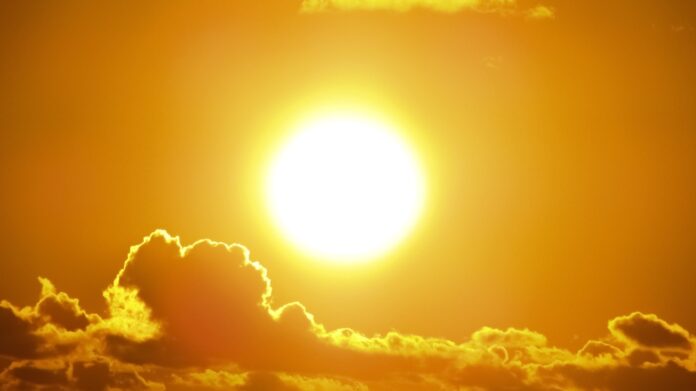A huge sunspot has been seen within firing rage of the earth. It’s reported to have grown double in size in just under 24 hours, and is as large as three times the size of the Earth, according to experts. The size is sparking fears for some over the possibility of it sending flares, however, experts told US Today that there is no cause for alarm.
Continue reading below
Our Featured Videos
“Yesterday, sunspot AR3038 was big. Today, it’s enormous,” Tony Phillips, author of SpaceWeather, wrote on Wednesday. “The fast-growing sunspot has doubled in size in only 24 hours.”
Related: Giant asteroid to zoom past earth
Phillips further said that the magnetic fields around the spot have the potential to blast M-Clas flares towards the earth. However, he also noted that the current scenario is not unique and should not be cause for alarm.
Sunspots tend to occur when the sun is very active, which has been the case this spring. When the sun is active, it sends out the strongest flares, which are referred to as M- Class flares. Sunspots have an 11-year cycle, growing stronger towards the end of the cycle.
Interestingly, sunspots are actually cooler than other parts of the sun. They appear darker than the rest of the sun, hence their name. According to NASA, they are cooler because they form where magnetic fields prevent the sun from reaching its surface.
“I guess the easiest way to put it is that sunspots are regions of magnetic activity,” said Rob Steenburgh, acting leader of the National Oceanic and Atmospheric Administration’s Space Weather Forecast Office.
“You can think of it like the twisting of rubber bands,” Steenburgh said. “If you have a couple of rubber bands twisting around on your finger, they eventually get twisted too much, and they break. The difference with magnetic fields is that they reconnect. And when they reconnect, it’s in that process that a flare is generated.”
In case a sunspot blasts out coronal mass ejection( CME), the charged parts could react with the earth’s magnetic fields and cause a colorful light display in the atmosphere. The colorful display lights are known as auroras. Nonetheless, the National Oceanic and Atmospheric Administration (NOAA) has not issued any alerts over the possibility of flares.
Experts remain observant, with NASA and NOAA watching the sunspots for any significant changes. For now, there is no cause for alarm or anything to fear about the sunspots.
Lead image via Pexels
















